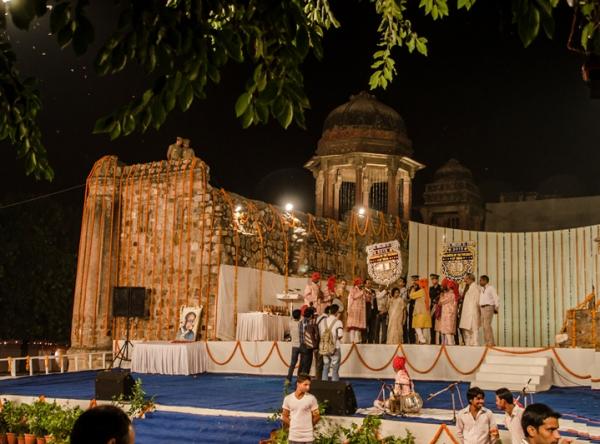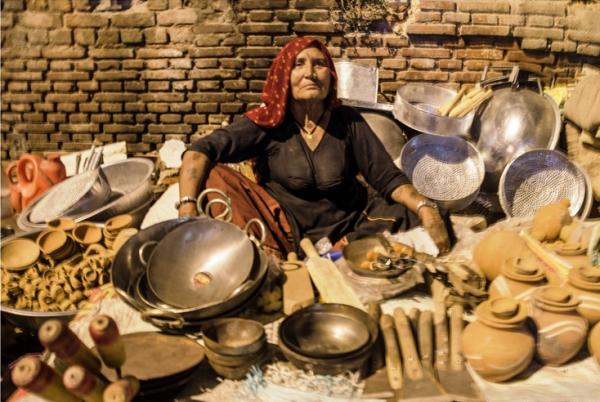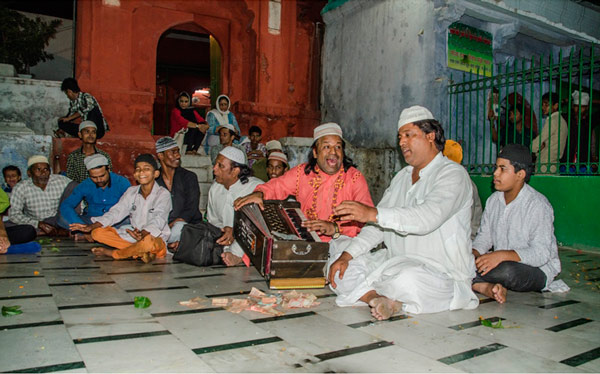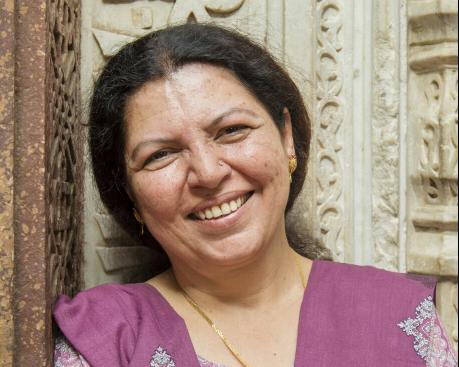Najeeb Jung will offer a chaddar at a dargah and a temple this week

In one of his many musings on Delhi, Ghalib wrote:
"Dilli ki hasti munasir kayi hungamon par hai:
Qila, Chandni Chowk,
har roz majma Jama Masjid,
har hafte sair Jamuna ke pul ki,
Aur Dilli men har saal melaa phool vaalon kaa - ye paanch baaten ab nahiin, phir dillii kahaan,"
(The existence of Delhi is dependent on many events: The fort, Chandni Chowk, the daily crowds at Jama Masjid, the weekly jaunts at the Yamuna bridge, the annual fair at the Phoolwaalon ki Sair, or the procession of the florists. Without these five things, Delhi would no longer be Delhi)
Nothing epitomises India's diverse culture like the Phoolwalon Ki Sair or the Sair-e-Gul Faroshan (Procession of the Flower Sellers).
What started out as a mother's anguish at her son being exiled and imprisoned, eventually turned into an outpouring of gratitude across cultures.
Mirza Jahangir, the son of Akbar Shah II, was exiled to Allahabad for taking a potshot at the British Resident Sir Archibald Seton.
Mirza Jahangir was a young and reckless lad who recognised the nature of the tenacious grip of the British. He was staunchly opposed to their growing influence.
His distraught mother, Mumtaz Mahal Begum, vowed that if her son was returned to them, she would offer a 'phoolon ki chaddar' (floral sheet) at the Dargah of Hazrat Bakhtiyar Kaki or Qutub Sahab. Her prayers worked and the young prince was restored to the family after a few years.
The empress stood by her vow. The entire court moved to Mehrauli for seven days of merry-making and celebrations. Hindus and Muslims alike joined in the festivities.
Since the empress had also pledged to walk barefoot, flower petals were scattered on the path to make things easier for her.

Photo: Syed Mohammed Qasim
A pankha was also presented to the Goddess Yogmaya in her temple at Mehrauli.
On public demand it was decided that the festivities would be made an annual affair.
Traditionally, if the Mughal emperors were unable to offer the pankhas at Yogmaya temple, they did not offer it at the Dargah of Qutub Sahab the next day.
In the first Sair-e-Gul Faroshan, Abu Sirajuddin Zafar (who later ascended the throne as Bahadur Shah II) offered the pankhas (fan) with a poem. I quote some of the verses below:
Nur e aflaak o karam ki hai yeh sab jhalak
Ki woh zahir hai malik aur batin hai malak
(It is a testimony of his divine light that he is the evident master and an angel in the heart)
Yeh bana uss Shah e Akbar ki badaulat pankha
Shaiq iss sair ke sab aaj hain badeed e dil
(The credit for this pankha goes to Emperor Akbar. This is close to everyone's heart)
Till the Mughals ruled India, this festival was celebrated with great pomp and show. The royal family would leave the Red Fort in a majestic procession going via the Purana Qila, Humayun's tomb and the Dargah of Sheikh Nizamuddin Auliya before making a stop at the madrasa in Safdarjung Tomb Complex. Here they would rest awhile and then leave for Mehrauli, which they would reach in the evening.

Photo: Syed Mohammed Qasim
The princes and princesses would dress up in their finest and pay their respects to Qutub Sahab. They would later go on to Jahaz Mahal, Hauz-e-Shamsi, Auliya Masjid and also stop to enjoy the weather at the waterfall, where swings would be put up for them.
The first pankhas would be offered at the Yogmaya temple on the eve of the 15th of month of Bhaado'n during the Mughal rule. The next day, there would be a procession to offer the pankhas at the Dargah of Qutub Sahab.
The emperor, empress, princes and princesses would carry flowers, perfumes and sweets in colorfully decorated baskets on their heads.
This tradition continued till 1857 with the Mughal kings using Zafar Mahal and Jahaz Mahal for their festivities. After 1857, the British continued the tradition and celebrated the festival.
During the Quit India movement in 1942, the British put an end to the festival. However, Prime Minister Jawaharlal Nehru restarted it in 1962. Till date, it is held annually.
The festival today has become a symbol of communal harmony and integration.
The President of India and the Lt Governor of Delhi are ceremoniously invited to the event.
A mela, or fair, is organised in Mehrauli, replete with amusement rides, crafts and artisans selling their wares.

Photo: Syed Mohammed Qasim
The pankhas are taken in a grand procession from Hauz-e-Shamsi and are offered at the Dargah of Qutub Sahab on Thursday and at the Temple of Yogmaya on Friday. The first pankhas offered are that of the President of India and the Lt Governor of Delhi.
Cultural troupes from the participating states also take out a ceremonial procession with their offering of a pankha through the streets of Mehrauli.
This year's festival kicked off on November 16. The fair, organised by Anjuman Sair-e-Gul Faroshan, is set up at the DDA park in Mehrauli.
On 18 November, traditional sporting events like kabaddi will be held at the DDA Park in Mehrauli. On 19 November, Lieutenant Governor Najeeb Jung will offer a floral chaddar at a Mehrauli Dargah. A floral chaddar and a pankha will be offered at the Yogmaya temple on 20 November.
(A more detailed depiction of the festival can be found in Rana Safvi's book, Where Stones Speak, Historical Trails in Mehrauli, The First City of Delhi)







![BJP's Kapil Mishra recreates Shankar Mahadevan’s ‘Breathless’ song to highlight Delhi pollution [WATCH] BJP's Kapil Mishra recreates Shankar Mahadevan’s ‘Breathless’ song to highlight Delhi pollution [WATCH]](https://images.catchnews.com/upload/2022/11/03/kapil-mishra_240884_300x172.png)

![Anupam Kher shares pictures of his toned body on 67th birthday [MUST SEE] Anupam Kher shares pictures of his toned body on 67th birthday [MUST SEE]](https://images.catchnews.com/upload/2022/03/07/Anupam_kher_231145_300x172.jpg)






